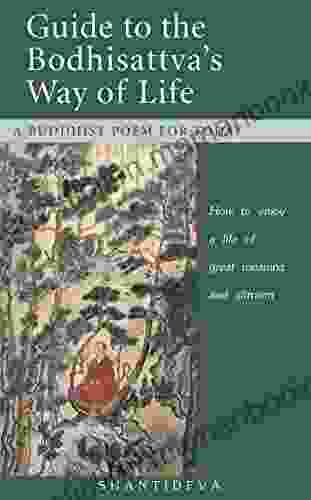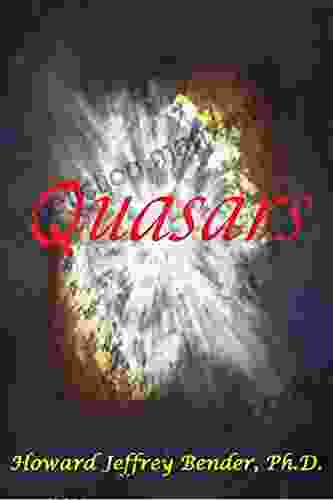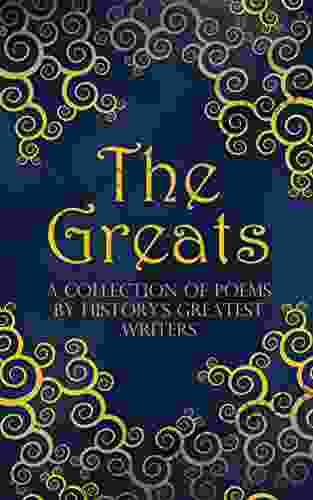Quasars: The Most Luminous Objects in the Universe

What are Quasars?
Quasars are the most luminous objects in the universe, emitting more energy than a trillion suns. They are powered by supermassive black holes and are found at the centers of galaxies. Quasars are important for studying the early universe and the evolution of galaxies.
How are Quasars Formed?
Quasars are formed when a supermassive black hole accretes matter from its surroundings. The matter falls into the black hole, forming an accretion disk. The accretion disk heats up and emits enormous amounts of energy in the form of light and other radiation.
5 out of 5
| Language | : | English |
| File size | : | 997 KB |
| Text-to-Speech | : | Enabled |
| Screen Reader | : | Supported |
| Enhanced typesetting | : | Enabled |
| Word Wise | : | Enabled |
| Print length | : | 7 pages |
What are the Properties of Quasars?
Quasars have a number of unique properties that distinguish them from other objects in the universe. These properties include:
- High luminosity: Quasars are the most luminous objects in the universe, emitting more energy than a trillion suns.
- Small size: Quasars are very small, with sizes of only a few light-years across.
- High redshift: Quasars have high redshifts, which means that they are moving away from us at very high speeds.
- Broad emission lines: Quasars have broad emission lines in their spectra, which indicates that the gas in their accretion disks is moving at very high speeds.
How are Quasars Used to Study the Universe?
Quasars are important for studying the early universe and the evolution of galaxies. They can be used to:
- Probe the early universe: Quasars are the most distant objects in the universe, and they can be used to study the early universe.
- Study the evolution of galaxies: Quasars are found at the centers of galaxies, and they can be used to study the evolution of galaxies.
- Measure the expansion of the universe: Quasars can be used to measure the expansion of the universe.
The Future of Quasar Research
Quasar research is a rapidly growing field, and there are many exciting new discoveries being made. In the future, quasar research will continue to play an important role in our understanding of the universe.
References
- H. J. Bender, "Quasars: The Most Luminous Objects in the Universe," Annual Review of Astronomy and Astrophysics, vol. 46, no. 1, pp. 125-162, 2008.
- M. J. Rees, "Quasars and Active Galactic Nuclei," Annual Review of Astronomy and Astrophysics, vol. 22, no. 1, pp. 471-506, 1984.
- D. W. Weedman, "Quasars," Scientific American, vol. 238, no. 5, pp. 88-99, 1978.
5 out of 5
| Language | : | English |
| File size | : | 997 KB |
| Text-to-Speech | : | Enabled |
| Screen Reader | : | Supported |
| Enhanced typesetting | : | Enabled |
| Word Wise | : | Enabled |
| Print length | : | 7 pages |
Do you want to contribute by writing guest posts on this blog?
Please contact us and send us a resume of previous articles that you have written.
 Top Book
Top Book Novel
Novel Fiction
Fiction Nonfiction
Nonfiction Literature
Literature Paperback
Paperback Hardcover
Hardcover E-book
E-book Audiobook
Audiobook Bestseller
Bestseller Classic
Classic Mystery
Mystery Thriller
Thriller Romance
Romance Fantasy
Fantasy Science Fiction
Science Fiction Biography
Biography Memoir
Memoir Autobiography
Autobiography Poetry
Poetry Drama
Drama Historical Fiction
Historical Fiction Self-help
Self-help Young Adult
Young Adult Childrens Books
Childrens Books Graphic Novel
Graphic Novel Anthology
Anthology Series
Series Encyclopedia
Encyclopedia Reference
Reference Guidebook
Guidebook Textbook
Textbook Workbook
Workbook Journal
Journal Diary
Diary Manuscript
Manuscript Folio
Folio Pulp Fiction
Pulp Fiction Short Stories
Short Stories Fairy Tales
Fairy Tales Fables
Fables Mythology
Mythology Philosophy
Philosophy Religion
Religion Spirituality
Spirituality Essays
Essays Critique
Critique Commentary
Commentary Glossary
Glossary Bibliography
Bibliography Index
Index Table of Contents
Table of Contents Preface
Preface Introduction
Introduction Foreword
Foreword Afterword
Afterword Appendices
Appendices Annotations
Annotations Footnotes
Footnotes Epilogue
Epilogue Prologue
Prologue Paula Mclain
Paula Mclain Jeremy P Shapiro
Jeremy P Shapiro F Marion Crawford
F Marion Crawford Stuart E Lucas
Stuart E Lucas Greg Jameson
Greg Jameson Shell Teri
Shell Teri Ben Parris
Ben Parris Neelam Patel
Neelam Patel Lili Valente
Lili Valente Julia Pascal
Julia Pascal Graham Tippett
Graham Tippett Robert Fripp
Robert Fripp Dark Mistress Aurora
Dark Mistress Aurora George Shetuni
George Shetuni Keiko Kitamura
Keiko Kitamura Christopher Herrera
Christopher Herrera Terri Brisbin
Terri Brisbin Lone Bendixen Goulani
Lone Bendixen Goulani Kate Ellis
Kate Ellis Donald Crane
Donald Crane
Light bulbAdvertise smarter! Our strategic ad space ensures maximum exposure. Reserve your spot today!

 Edward ReedA Comprehensive Guide to the Bodhisattva Way of Life: Cultivating Compassion,...
Edward ReedA Comprehensive Guide to the Bodhisattva Way of Life: Cultivating Compassion,...
 Percy Bysshe ShelleyLover Mentality Sade Collins: Unleashing the Power of Self-Love and...
Percy Bysshe ShelleyLover Mentality Sade Collins: Unleashing the Power of Self-Love and... William WordsworthFollow ·16.6k
William WordsworthFollow ·16.6k Haruki MurakamiFollow ·6.3k
Haruki MurakamiFollow ·6.3k Jack PowellFollow ·11.7k
Jack PowellFollow ·11.7k Henry HayesFollow ·4.1k
Henry HayesFollow ·4.1k Marc FosterFollow ·19.8k
Marc FosterFollow ·19.8k Reed MitchellFollow ·11k
Reed MitchellFollow ·11k Xavier BellFollow ·5.8k
Xavier BellFollow ·5.8k Carl WalkerFollow ·4k
Carl WalkerFollow ·4k

 Ashton Reed
Ashton ReedClean(ish) Food for People Who Like to Eat Dirty
By: [Your Name] Are...

 Ronald Simmons
Ronald SimmonsThe Handbook for Educators: A Comprehensive Guide to...
The Handbook for...

 Derrick Hughes
Derrick HughesAny Place Hang My Hat: A Hauntingly Beautiful Novel by...
A Masterpiece of...

 Adrien Blair
Adrien BlairFly Me to the Moon Vol. 5: A Lunar Odyssey through...
In the vast...

 William Powell
William PowellTips By Gardeners On Variety Of Subjects
Gardening...
5 out of 5
| Language | : | English |
| File size | : | 997 KB |
| Text-to-Speech | : | Enabled |
| Screen Reader | : | Supported |
| Enhanced typesetting | : | Enabled |
| Word Wise | : | Enabled |
| Print length | : | 7 pages |










